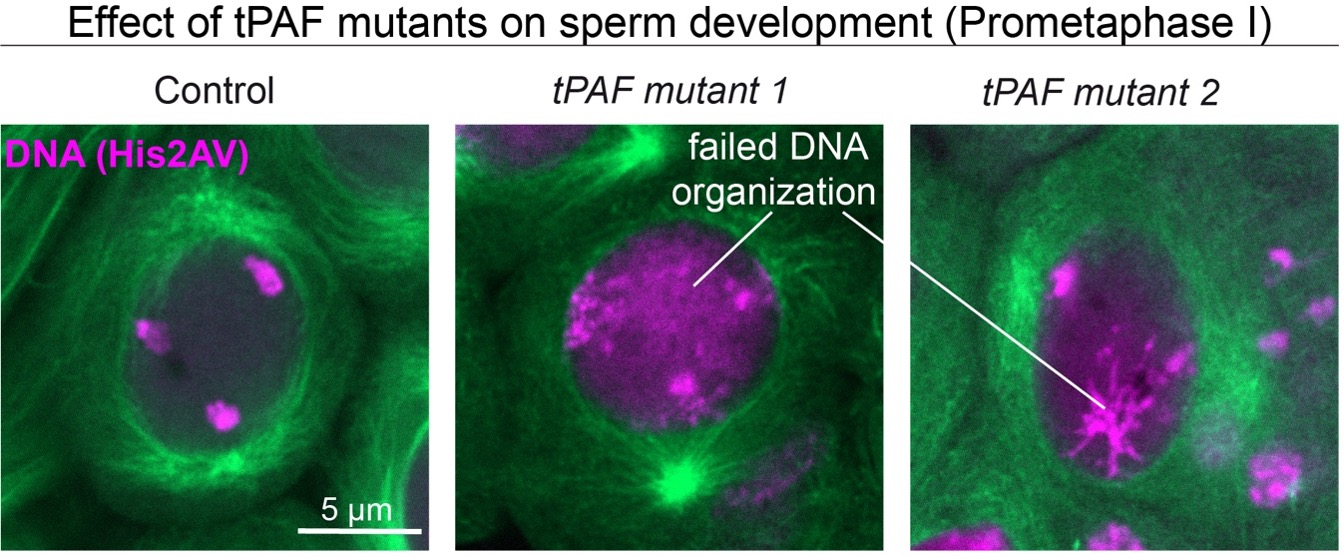New research from MBG shows how animal fertility relies on specialized gene copies.
What if the key to fertility lies in genes we normally think of as junk? A new research paper from Peter Ebert Andersen’s group at MBG explores how certain genes, called paralogs, help ensure that genes are expressed correctly in specific cell types, which is crucial for the development and fertility of animals. These paralog genes are all relatively young in evolutionary terms and had been assumed to be so-called pseudogenes without important functions.

What if the key to fertility lies in genes we normally think of as junk? A new research paper from Peter Ebert Andersen’s group at MBG explores how certain genes, called paralogs, help ensure that genes are expressed correctly in specific cell types, which is crucial for the development and fertility of animals. These paralog genes are all relatively young in evolutionary terms and had been assumed to be so-called pseudogenes without important functions.
Peter and his colleagues discovered that a set of testis-specific paralog proteins form a complex called tPAF, which is essential for properly ending the gene activation seen during sperm development. Without tPAF, many genes are incorrectly expressed, leading to problems with sperm development and male fertility. The study provides a detailed model of how tPAF and its general counterpart, PAF1C, function differently to regulate gene expression in a cell type-specific manner. This research highlights the critical role of testis-specific protein complexes in ensuring proper gene expression and fertility.
Peter explains “This study is a great example of how generosity and collaboration amongst researchers can help catalyze big discoveries. My former postdoc colleague, Dr Rippei Hayashi, made the first key observations but instead of investigating further alone, he reached out to me and suggested that our groups work on this together. Our collaboration resulted in more profound discoveries than any of us could likely have made in isolation.”
However, even in this collaborative setting, the research behind the paper started as a journey into the unknown: “Our group’s first PhD student, Astrid Vilstrup, took this project much further than I had dared hope for. Starting from literally zero knowledge on five uncharacterized genes in the fruit fly animal model system, she uncovered the biochemistry and molecular as well as developmental function of the encoded proteins!”
The paper is published in the journal Genes and Development
The scientific article:
A germline PAF1 paralog complex ensures cell type-specific gene expression
Astrid Pold Vilstrup,1 Archica Gupta,2 Anna Jon Rasmussen,1 Anja Ebert,1 Sebastian Riedelbauch,1 Marie Vestergaard Lukassen,3 Rippei Hayashi,2 and Peter Andersen1
1 Department of Molecular Biology and Genetics, Aarhus University, 8000 Aarhus, Denmark;
2 The Shine-Dalgarno Centre for RNA Innovation, The John Curtin School of Medical Research, The Australian National University, Acton, Australian Capital Territory 2601, Australia;
3 Technical University of Denmark, 2800 Kongens Lyngby, Denmark
Genes & Developement, Published in Advance September 27, 2024, doi:10.1101/gad.351930.124
SUPPLEMENTARY INFORMATION, INCLUDING CONTACT INFORMATION
We strive to ensure that all our articles live up to the Danish universities' principles for good research communication. Against this background, the article is supplemented with the following information:
Study type:
Research article
External funding:
In the P.A. group, this work was supported by the Novo Nordisk Foundation (NNF18OC0030954), an Aarhus Institute of Advanced Studies (AIAS) Marie Skłodowska-Curie Actions (MSCA) COFUND Fellowship, and the Independent Research Foundation Denmark (9064-00056B). The R.H. group is supported by the Australian Research Council (DP210102385).
Conflicts of interest:
None
More information
Peter Ebert Andersen
Department of Molecular Biology and Genetics
Aarhus University, Denmark
pra@mbg.au.dk
